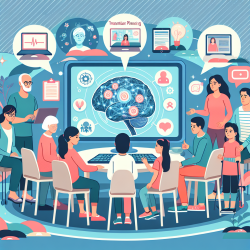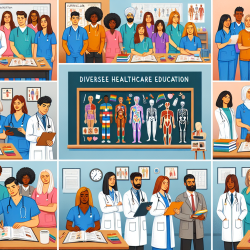Introduction
In the realm of stroke rehabilitation, the role of caregivers is pivotal. However, equipping them with the necessary knowledge and confidence to manage the transition from hospital to home can be challenging. The study titled "The virtual family conference in stroke rehabilitation: Education, preparation, and transition planning" provides insightful data on how virtual family conferences can enhance caregiver preparedness and satisfaction.
The Study at a Glance
This research involved 87 caregivers participating in 48 virtual family conferences. The conferences aimed to educate and prepare caregivers for the transition of stroke patients back into the community. The study utilized teleconferencing to facilitate these meetings, ensuring accessibility and reducing the need for technological literacy.
Key Findings
- Improved Knowledge: Post-conference, caregivers reported significant improvements in their understanding of stroke, its management, and available community services.
- Increased Satisfaction: Caregivers expressed higher satisfaction with the information provided, particularly concerning stroke and discharge planning.
- Enhanced Confidence and Reduced Stress: There was a notable increase in caregiver confidence and preparedness for the transition, alongside a reduction in stress levels.
Implications for Practitioners
For practitioners, these findings underscore the importance of integrating virtual family conferences into stroke rehabilitation protocols. Here’s how you can apply these insights:
- Adopt Virtual Platforms: Utilize teleconferencing to conduct family meetings, ensuring broader participation and engagement.
- Focus on Education: Tailor conference content to cover critical areas such as stroke management, community services, and discharge planning.
- Encourage Interactive Participation: Facilitate a dynamic exchange of information by encouraging caregivers to ask questions and express concerns.
Encouraging Further Research
While this study provides a solid foundation, further research is needed to explore the long-term impacts of virtual family conferences on patient and caregiver outcomes. Investigating different virtual modalities and comparing them with in-person meetings could yield additional insights.
Conclusion
The virtual family conference model presents a viable and effective approach to enhancing caregiver education and preparedness in stroke rehabilitation. By adopting such innovative strategies, practitioners can significantly improve the transition experience for both patients and their caregivers.
To read the original research paper, please follow this link: The virtual family conference in stroke rehabilitation: Education, preparation, and transition planning.










